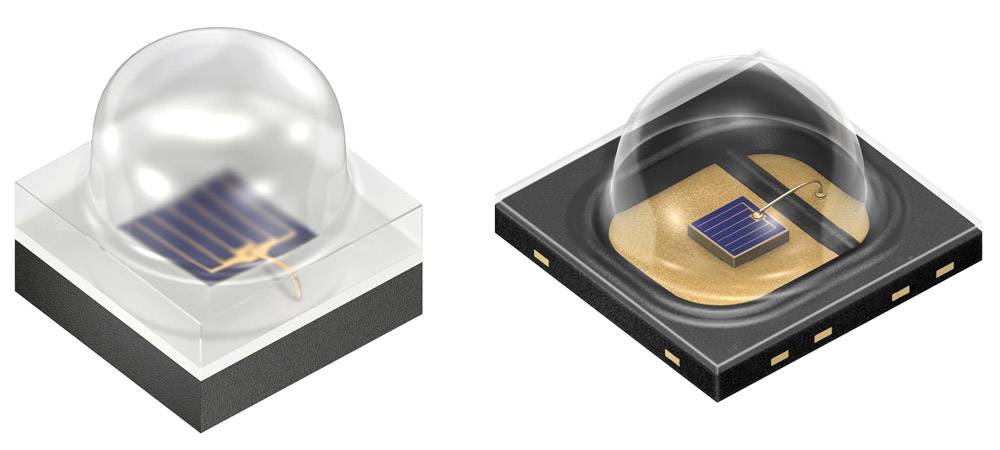News: LEDs
22 October 2024
ams OSRAM adds LEDs based on new IR:6 technology to boost performance in security and biometrics
ams OSRAM GmbH of Premstätten, Austria and Munich, Germany has introduced its new IR:6 infrared (IR) LED chip technology, which increases brightness by up to 35% and efficiency by up to 42% compared with the existing chip technology used in ams OSRAM IR LED emitters.
The new IR:6 thin-film chip technology will enable manufacturers of products such as security cameras and biometric authentication systems in PCs and smart doorbells to achieve better illumination for improved image quality as well as the faster, more accurate recognition of individual biometric markers, while saving power and extending battery run-time between charges, says the firm.
In medical equipment such as light therapy fixtures for the treatment of tissue damage, the higher optical power output from the IR:6 chip can enable equipment makers to use fewer LEDs while producing the same therapeutic effect, saving space and reducing bill-of-materials cost.
The first products to take advantage of the new chip are the OSLON P1616 series of high-power LEDs in a compact 1.6mm x 1.6mm package — and the OSLON Black family, which offers various viewing angle options, including a new rectangular field of illumination which is suitable for use with IR cameras.

Picture: ams OSRAM’s OSLON P1616 and OSLON Black LEDs.
“Customers that replace their existing IR LEDs with new IR:6-based LEDs can instantly achieve better performance in their application with lower power consumption,” says product marketing manager Dominic Bergmann.
IR:6 next-generation infrared LED technology
To achieve its performance, the new IR:6 chip technology implements various improvements in materials, structure and design, including:
- improvements to the intrinsic chip efficiency;
- a new central bond pad for better current spreading and a lower forward voltage;
- better roughening of the chip’s surface for higher decoupling efficiency and higher brightness.
In addition, the new IR:6 technology adds the capability to emit light at a 920nm dominant wavelength, as well as the familiar 850nm and 940nm wavelengths. The new 920nm option offers a higher signal-to-noise ratio (SNR) than the 940nm option because of photodiodes’ higher sensitivity to shorter wavelengths, and a weaker visible red glow effect than at 850nm.
At the time of its launch, IR:6 technology is available in the following ‘B’ designated versions of the existing OSLON P1616 products, which are aimed at space-constrained applications:
- OSLON P1616 SFH 4180BS – 920nm/940nm-wavelength options, 1485mW radiant flux, 130° viewing angle;
- OSLON P1616 SFH 4181BS – 920nm/940nm-wavelength options, 1550mW radiant flux, 70° viewing angle;
- OSLON P1616 SFH 4182BS – 920nm/940nm-wavelength options, 1650mW radiant flux, 130° optimized viewing angle.
The technology is also available in new versions of existing OSLON Black emitters:
- OSLON Black SFH 4713B – 850nm wavelength, 980mW radiant flux, 80° viewing angle;
- OSLON Black SFH 4714B – 850nm wavelength, 940mW radiant flux, 150° viewing angle;
- OSLON Black SFH 47167B – 850nm wavelength, 940mW radiant flux, 110° x 130° rectangular field-of-illumination.
The IR:6 chip is manufactured by ams OSRAM at its plant in Regensburg, Germany. The entire supply chain for OSLON P1616 and OSLON Black LEDs, from chip to packaging, is fully controlled by ams OSRAM to give customers full confidence in the product’s high-volume availability, the firm adds.
ams OSRAM adds 920nm variant to OSLON Black and SYNIOS P2720 IR LED ranges
ams OSRAM adds camera-optimized emitters to OSLON P1616 high-power IR LED range









